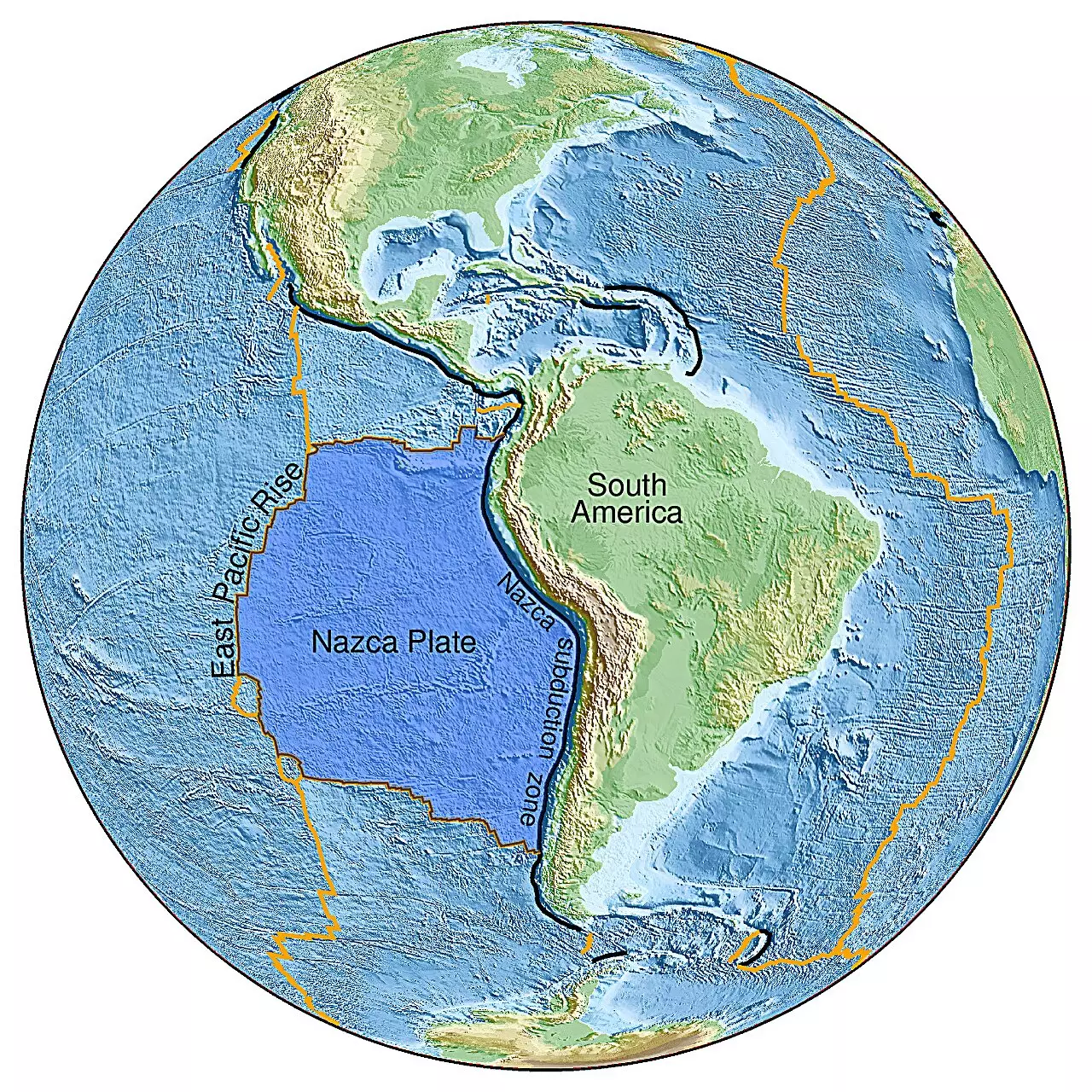Recent findings from scientists at the University of Maryland have shed light on a puzzling aspect of Earth’s geological history, specifically concerning an ancient seafloor that once submerged deep into the planet’s mantle during the age of dinosaurs. This research not only challenges conventional understandings of Earth’s interior but also provides a nuanced perspective on the dynamic processes that shape our planet over eons. The study, published in the esteemed journal Science Advances on September 27, 2024, was spearheaded by Jingchuan Wang and his team, employing innovative seismic imaging techniques to uncover the enigmatic details of this ancient oceanic crust.
The East Pacific Rise, a tectonic plate boundary situated in the southeastern Pacific Ocean, serves as the backdrop for this groundbreaking research. Historically, this region has received limited attention regarding its geological complexity. However, the current study reveals previously undiscovered features that potentially reshape our understanding of how the Earth’s features evolve over millions of years. The team’s meticulous exploration led them to an unusually thick area within the mantle transition zone—spanning depths between 410 to 660 kilometers—that separates the upper and lower mantles. This discovery may also contribute to understanding the anomalous structure of the Pacific Large Low Shear Velocity Province (LLSVP), a significant area in Earth’s lower mantle that appears irregular and possibly disrupted by geological processes.
An instrumental aspect of this research was the use of advanced seismic imaging, which Wang likened to a CT scan of the Earth. By analyzing the movement and behavior of seismic waves as they traversed different layers beneath the ocean floor, the team constructed intricate three-dimensional mappings of the structures hidden deep within the mantle. This method stands in stark contrast to traditional geological studies, which typically rely on rock samples and surface sediment analysis. Instead, the seismic approach allows scientists to obtain insights into the deep Earth, revealing interactions between the surface and the underlying geological formations that were previously obscured from view.
One of the standout revelations from Wang’s study was the unexpectedly slow movement of materials within the Earth’s interior. The data suggested that the material in the region they examined sinks at roughly half the rate previously anticipated. This discovery indicates that the mantle transition zone can act as a constraining barrier, hindering the downward progression of oceanic slabs. Such findings compel scientists to reassess the dynamics of material recycling within our planet’s lithosphere, raising significant questions about how these processes impact surface geological features such as volcanoes and seismic activity.
Wang expressed the innovative potential of this research, stating that understanding the barriers and slow-moving materials in the mantle could significantly enhance models of tectonic plate movements throughout Earth’s history. This insight also challenges notions of rapid subduction, suggesting that some oceanic crust may become ‘stuck’ within the mantle, influencing geological processes far beyond their immediate locations.
The implications of Wang and his team’s findings are vast, offering a springboard for future investigations. The research team plans to extend their studies to explore other regions of the Pacific Ocean, aiming to map out additional ancient subduction zones and their corresponding geological impacts. Such endeavors promise to build a more comprehensive understanding of how ancient geological processes affect contemporary Earth structures.
Anticipating the discoveries that lie ahead, Wang suggests that many more ancient geological formations remain hidden within the Earth’s depths, waiting to be unveiled. Research like this not only enriches our knowledge of Earth’s complex history but also serves as a reminder of the planet’s ongoing evolution and the intricate processes that transcend time.
The University of Maryland’s research team has opened a new chapter in our understanding of Earth’s geological framework. By revealing the characteristics of ancient seafloors and providing insight into deep mantle processes, they are changing the narrative around how we perceive the dynamics of our planet. As additional data accumulates and further research unfolds, the scientific community stands poised to gain deeper insights into Earth’s interior and its extensive implications for the surface world. This study highlights not only the complexity of our planet but also the continual quest for knowledge that drives scientists to explore its mysteries.

